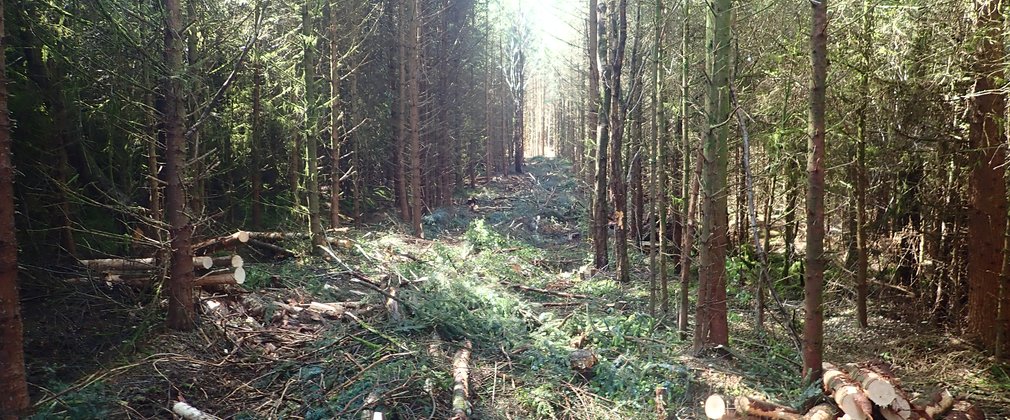Thinning work in Hamsterley Forest
Trees need space to grow and the trees growing in Low Redford Plantation have reached the stage where they need to be ‘thinned’. We’ll be starting this operation soon.
What is thinning?
When we plant a forest to produce timber, we often place trees close together so that they grow tall and straight with fewer branches. This produces stronger timber with fewer knots in the wood. Some trees will not grow as well as others, so we fell the smaller trees to create space and light for the others to grow better. This is called thinning.
During thinning, we remove selected trees to give the remaining ones more space to grow to their potential. The majority of the trees will remain in place but by thinning there will be increased light on the forest floor which increases the diversity of plants and encourages more wildlife - supporting the wider ecosystem.
What are the benefits of thinning?
Thinning benefits plants and animals. It encourages the trees that are remaining to develop more stability and larger crowns (located at the top of the tree). Larger crowns in conifers encourage more cone production (coning) - this benefits red squirrels and birds such as Siskin and Crossbills. Larger bird species, such as woodpecker and buzzard, benefit from more open woodlands that they can fly and hunt through.
The forest floor benefits from the open space and extra light. The disturbance by the machinery creates new patches of soil, creating good seedbeds. Initially, shade tolerant plant species, such as fungi and mosses, will benefit. A range of plants and grasses will follow as thinning opens up the forest further. In later thinning species such as Heather and Bilberry may start to occur.
What happens to the wood?
The wood from the trees that are thinned is used for things like fence posts, pallets, wood chips and fuel. The remaining trees will carry on growing.
How we manage the nation’s forests
Forestry England was the first national forest organisation in the world to achieve FSC certification for woodland management and is independently audited by the Soil Association as part of the UK Woodland Assurance Scheme, which continues to demonstrate the world leading quality and sustainability of our practices.
Harvesting trees is an important part of sustainable forest management and well managed forests support more wildlife. Before we start any forestry work, we carry out thorough ecological surveys to check for species such as birds, mammals, rodents, invertebrates, flora, and fungi.
We consider our findings against complex factors when planning forestry work. While working, we continue to check for wildlife and adapt, pause, or suspend work if necessary.

